 Facebook
Facebook
 X
X
 Instagram
Instagram
 TikTok
TikTok
 Youtube
Youtube
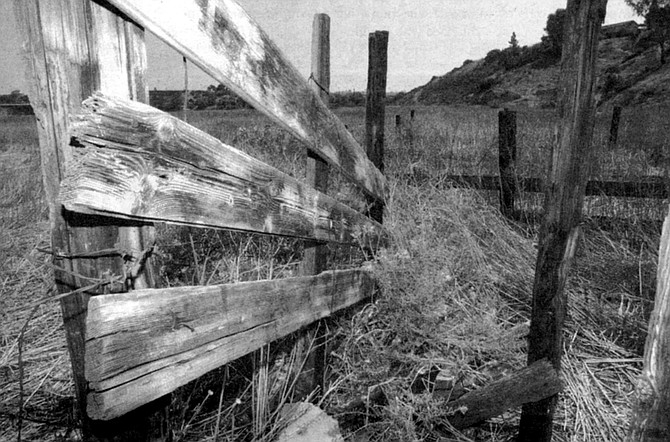
It's dangerous to love a piece of land, particularly one that's located in Southern California. I can't say when the full fierceness of my feelings for the valley behind my house actually hit me, the process of falling in love was day by day, flower by flower, violation by violation. Anyone who has a real hunk of nature near them would laugh at this pitiable piece of land, would find it unworthy as an object of love. Even the environmental impact reports refers to it as disturbed land. But there have been springs when I have parted the heavy fringe of the aged pepper trees and stepped out of arid Southern California and into Oz, into a dazzling display of emerald stems, wild yellow daisies, sunflowers, and the synesthesia of air scented yellow by distant lemon eucalyptus trees.

My first glimpse of the lower Sweetwater Valley, the northern border of Chula Vista, was through the second story, rain-flecked windows of an old clapboard house. The house was a fixer-upper and the price was low, even for 1978. The only heating source was a grated floor heater between the living room and the dining room on the bottom floor. The elderly couple who lived in the house hung curtains around the floor heater to contain the heat. One room served to store car parts; the whole of the house, though potentially beautiful, was glued together with whatever materials were available. Still, my husband and I consented to buy the place that day. Partly because the woman had baked bread (the cynic in me wonders if her realtor suggested it), and the perfume of domestic contentment wove itself through the other ancient smells. But the other reason we bought the house was the glimpse of the Lower Sweetwater Valley from the second story. Through the window in the room -- which would ultimately become our bedroom -- we could see a dirt road, some wild-looking, heavy-hanging trees, and a dozen or so cattle grazing on acres of wide-open land. "Like paperweights, cows hold down the horizon," wrote the poet Anne Michaels, and in truth, I mistook the cows' solid bodies, ancient allusions, and slow movement for permanence.
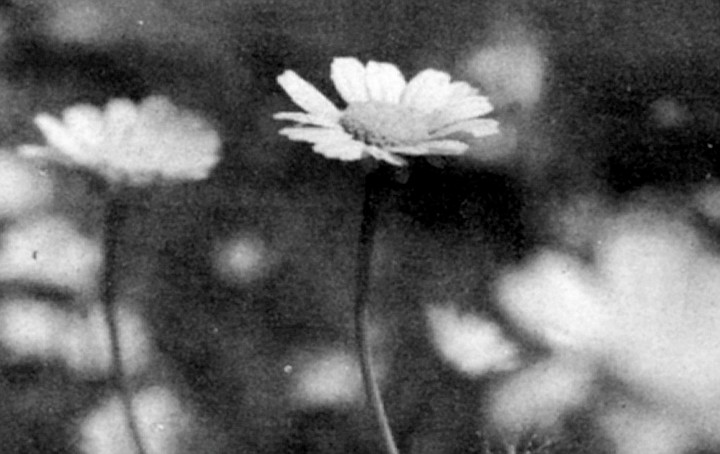
When you fall in love with someone, your life becomes enmeshed with theirs: ribbon and hair, sinew and bone, sickness and health. This valley, this visual gateway to the city of Chula Vista, is a piece of crap now. Plastic water bottles, spraypaint cans, dissolving paint balls, CO2 cartridges, graffiti, dog shit, trash from litterers, trash from illicit dumping are the field's decor. Because the city has failed to enforce the No Unauthorized Vehicles sign, the ground is packed increasingly harder by trucks, motorcycles, four-wheelers, and cars. More than a third of the valley has been sold off to KOA (Campgrounds of America), which has turned much of its newly acquired property into a parking lot. From highways 805 and 54, noise and toxins, which no doubt exceed the city's threshold, spew down on the area. Under the giant pepper trees where my grandson used to act out his wilderness fantasies are shallow pits of human feces from the unfortunate homeless, camouflaged dugouts from the paintball wars, and the surprised eyes of naked women ripped from glossy magazines. Even nature has turned her back on the field. Refused to rain. Refused to soften the soil so the flowers can reinvent themselves. There is less forage so there are fewer animals. Sickness and health? I begin to unlove this soiled, sere, shrunken tract of land.
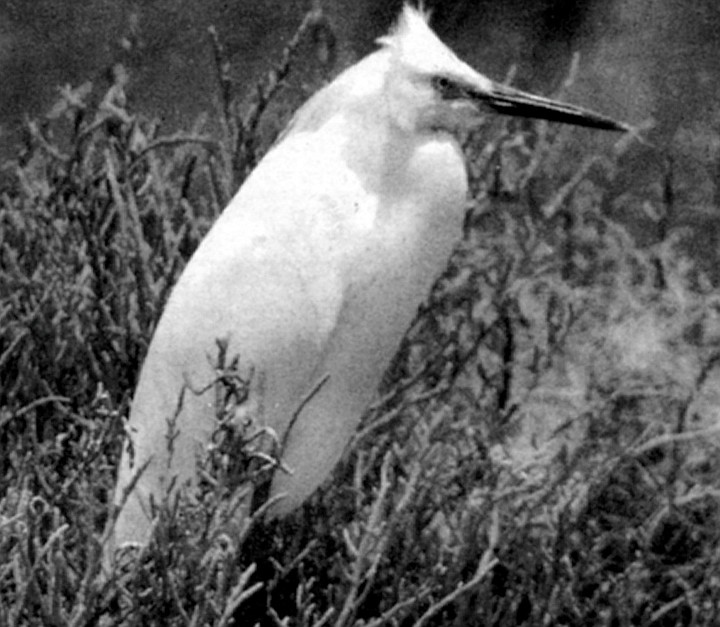
It makes me sick to think of the potential this valley once had. In 1989, when Greg Cox was mayor of Chula Vista, the city adopted into the general plan a lovely "greenbelt" concept -- essentially a contiguous, open park-like greenbelt that was to encircle the city of Chula Vista. The Lower Sweetwater Valley property was recognized as "potentially a portion of, or a visual element adjacent to, the Chula Vista Greenbelt." As late as 1994, this property still contained 38 available acres; 14 were already owned by the city of Chula Vista, and all of it was designated "Open Space/Special Study area." The potential of the area was enhanced by the fact that it ran parallel to the Sweetwater River flood-control channel. The stream of water was useful to the animals living in the valley and an attraction for riparian birds. Though not pristine in terms of nature, the valley contained a nice slice of wildlife. A partial list of the birds and other animals that have lived in the valley includes California quail, loggerhead shrikes, California gnat catchers, Bell's vireos, Wilson's warblers, killdeer, red-tailed hawks, Cooper's hawks, kestrels, great horned owls, Costa's hummingbirds, cliff swallows, ravens, towhees, sparrows, brown-headed cowbirds, black phoebes, hooded orioles, finches, mourning doves, mockingbirds, coyotes, possums, skunks, foxes, squirrels, desert cottontails, wood rats, mice, lizards, true toads, and snakes.
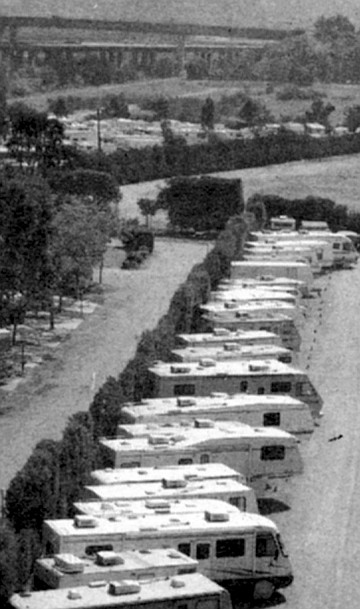
Many of these fauna have gone the way of the frogs we used to hear when we first moved to this area. Summer nights were filled with their thrum. Now there is only the chirrup of the tiny tree frogs. For the last two years, the clapper rail and the red-winged blackbirds also have gone missing from the Sweetwater River, perhaps as a result of the groundwater demineralization plant that was built on the other side of the river, or perhaps as a result of the drought.
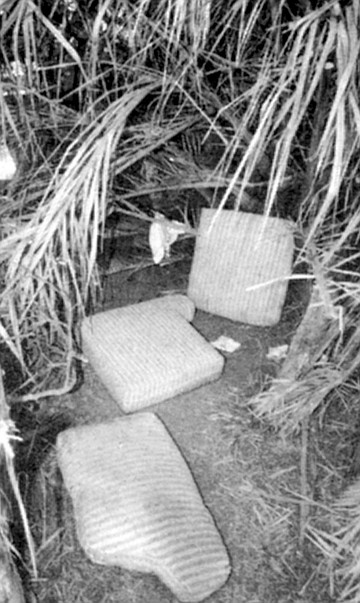
In Southern California, land and water, to state the obvious, are deeply political. All through the '90s the undeveloped valley burned holes in people's pockets. Proposals for the area included a residential development, a relocation for displaced mobile homes, a senior care center, a veteran's home, and a water demineralization plant, and always lurking around the edge was the KOA, hungry to expand. When Greg Cox was mayor of Chula Vista, he was a proponent of the Greenbelt. In his next incarnation, Cox, wearing his "private sector" suit, tried to convince a stunned and hostile group of residents at Rosebank Elementary School that we should fill up that little pocket of nature with a "Fun Park," replete with water slides.
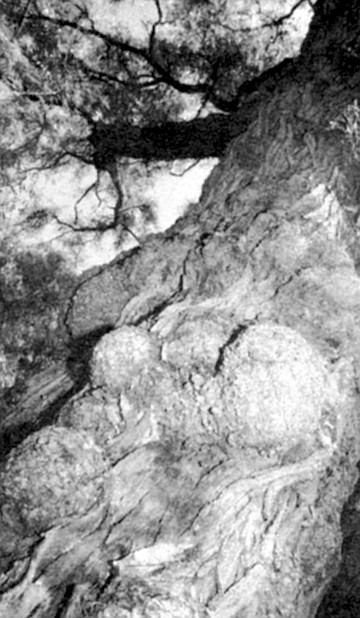
"I want to see how we might redefine the erotic, how an erotics of place might lead to a politics of place," writes the author/environmentalist Terry Tempest Williams. I was not the only one who fell in love with the Lower Sweetwater Valley. Love is whimsical, and people fall in love according to their fancy. One neighbor loved the way frost and little sheaths of ice gathered each year in the winter shadows of the western slopes. Another neighbor loved the remains of the wooden corral that marks the entrance to the canyon. Another gathered the red berries of the toyon shrub for her holiday table. There used to be so much to love. Early mornings, when the fog was hip deep, out of the coyote-colored brush a coyote would emerge, and the juxtaposition of his timeless yellow eyes with the fast-flying cars would allow me, for a moment, to live in two worlds at once.
The Rosebank community, galvanized by its appreciation of the land in its natural state and indignant about the proposals that would degrade or eradicate it, attended meeting after meeting, pleading with the City to let the valley remain open space. At one Chula Vista City Council meeting, over a hundred of us pinned green silk ribbons that said "Open Space" to our shirts. The Lower Sweetwater Valley Issue paper, prepared by the Chula Vista Planning Commission, recounts the neighborhood's opposition: "In 1990...the City received a petition containing approximately 600 names of residents objecting strongly to the Mobile Home Relocation project.... In December 1993...[at a public forum held at Rosebank school]...a significant amount of discussion occurred...attended by approximately 60 residents, [expressing] a significant interest in preserving the vacant land area within the valley as open space.... At a City Council meeting in February 1994, representatives of the adjacent neighborhood again expresse... their desire for open space within the vacant Lower Sweetwater Valley property.... A petition was submitted signed by over 100 residents, which outlined their desires...." It seems the mayor and the city council had stuffed their ears with wax.
During one pitched battle, the Chula Vista Star News ran a mean-spirited cartoon calling the Rosebank neighborhood NIMBYs because none of the proposals pleased us. Perhaps the cartoonist hadn't grasped how our community had been reconfigured by highways 805 and 54 and the widening of E Street to four lanes. And though affordable housing is necessary in Chula Vista, it was difficult to see the stand of eucalyptus trees that was our eastern border cut down and the huge apartment complex named Eucalyptus Grove constructed. But the real question is, in order to be a good sport, must every back yard in Chula Vista or open space in Southern California be developed?
Who can tell the many ways the natural world feeds us? The Lower Sweetwater Valley has served as a recreational and inspirational resource. One morning I looked up on the levee and saw a colorful line of kindergartners singing to the ducks in the Sweetwater River. Kathy Scott, a teacher from Rosebank School, takes her students out through the canyon several times a year to see the way seasons affect plants, to see the chance rabbit, squirrel, lizard, or red ant. In a time when cows are being transported to playgrounds to show children where milk comes from, a patch of nature is a useful learning tool. Children of all ages stalk lizards in the field, hunt crawdads in the river. Some kids have constructed elaborate bike jumps. Adults walk their dogs, jog, bicycle, birdwatch, and chat with their neighbors. This dwindling open space has functioned as a park -- de facto if not du jour -- for the last 20 years.
Chula Vista's mayor and city council have been so busy enabling the developers they have failed to attend to the older areas in the city. Recently a group of Chula Vista mothers had to go begging for a small scrap of land and a few toys for their children to play on. The mothers were obliged to enlist Michael Turko, the KUSI troubleshooter, to get Mayor Shirley Horton to respond to their request. Chula Vista's Growth Management Plan puts its park threshold at 3 acres per 1000 residents. West of 805, within which the Lower Sweetwater Valley is located, the status is 1.22 acres per 1000. For over ten years the city has noted in its own documents that the Rosebank area is significantly park-deprived. Yet it has allowed 18.4 acres of the Special Study/Open Space area to be sold off to the KOA and allowed the 20 remaining acres to deteriorate.
A new development is afoot...never mind the neighborhood. And from the northern front of this embattled piece of land, just this week I saw a KOA employee measuring the access road that runs along the Sweetwater River. He told me that the city is looking into paving a road and constructing championship playing fields. The valley's last stand? I have a friend, Philip Maechling, who took his Master's in Landscape (Architecture and Regional) Planning at Pennsylvania and worked for the San Diego Planning Department for a few years before returning to Montana. He used to say that it was a forgone conclusion that every inch of coastal San Diego county was going to be developed.
It's time to move. Forget this trashed piece of land and stop making myself sick over it. Besides, if they develop the R-1 strip, the property value of our house will go up. But where can we move to? This is a metaphor for San Diego, for Southern California. At a recent Chula Vista City Council meeting, the council voted 4-1 to give the green light for the first steps toward developing 126 acres of property located near Chula Vista's bay front and the Sweetwater Marsh National Wildlife Refuge. The project proposes 3400 residential units plus hotels, restaurants, and recreation areas. Councilmember Mary Salas was the only dissenting vote. Mayor Horton has always been eager to develop the bay front and the mid-bay front property held by the San Diego Unified Port District. But who, aside from those who stand to make huge profits, is asking for this property to be developed? Arguing in favor of the development, Horton said, "We have a housing crisis." In reality, we have a water crisis; we have an energy crisis; we have a traffic-gridlock crisis; we have an ozone/air quality crisis; we have an open space/park crisis; we have a leadership crisis.
I think of the black phoebe perched on the dried spine of last year's flower who doesn't see the end in sight. I think of the valley, which, like a thirsty houseplant responding to a drink of water, will put on a new green suit after the slightest bit of rain. I think of Rachel Carson exhorting us from the grave that it is our obligation to endure. Of E.O. Wilson urging us to be stewards of the land...or else. Of Portland, Oregon, where they ripped out the freeway along the Willamette River and built an extensive park. All that can be done is to cling to the dried spine of last year's flower.


It's dangerous to love a piece of land, particularly one that's located in Southern California. I can't say when the full fierceness of my feelings for the valley behind my house actually hit me, the process of falling in love was day by day, flower by flower, violation by violation. Anyone who has a real hunk of nature near them would laugh at this pitiable piece of land, would find it unworthy as an object of love. Even the environmental impact reports refers to it as disturbed land. But there have been springs when I have parted the heavy fringe of the aged pepper trees and stepped out of arid Southern California and into Oz, into a dazzling display of emerald stems, wild yellow daisies, sunflowers, and the synesthesia of air scented yellow by distant lemon eucalyptus trees.

My first glimpse of the lower Sweetwater Valley, the northern border of Chula Vista, was through the second story, rain-flecked windows of an old clapboard house. The house was a fixer-upper and the price was low, even for 1978. The only heating source was a grated floor heater between the living room and the dining room on the bottom floor. The elderly couple who lived in the house hung curtains around the floor heater to contain the heat. One room served to store car parts; the whole of the house, though potentially beautiful, was glued together with whatever materials were available. Still, my husband and I consented to buy the place that day. Partly because the woman had baked bread (the cynic in me wonders if her realtor suggested it), and the perfume of domestic contentment wove itself through the other ancient smells. But the other reason we bought the house was the glimpse of the Lower Sweetwater Valley from the second story. Through the window in the room -- which would ultimately become our bedroom -- we could see a dirt road, some wild-looking, heavy-hanging trees, and a dozen or so cattle grazing on acres of wide-open land. "Like paperweights, cows hold down the horizon," wrote the poet Anne Michaels, and in truth, I mistook the cows' solid bodies, ancient allusions, and slow movement for permanence.

When you fall in love with someone, your life becomes enmeshed with theirs: ribbon and hair, sinew and bone, sickness and health. This valley, this visual gateway to the city of Chula Vista, is a piece of crap now. Plastic water bottles, spraypaint cans, dissolving paint balls, CO2 cartridges, graffiti, dog shit, trash from litterers, trash from illicit dumping are the field's decor. Because the city has failed to enforce the No Unauthorized Vehicles sign, the ground is packed increasingly harder by trucks, motorcycles, four-wheelers, and cars. More than a third of the valley has been sold off to KOA (Campgrounds of America), which has turned much of its newly acquired property into a parking lot. From highways 805 and 54, noise and toxins, which no doubt exceed the city's threshold, spew down on the area. Under the giant pepper trees where my grandson used to act out his wilderness fantasies are shallow pits of human feces from the unfortunate homeless, camouflaged dugouts from the paintball wars, and the surprised eyes of naked women ripped from glossy magazines. Even nature has turned her back on the field. Refused to rain. Refused to soften the soil so the flowers can reinvent themselves. There is less forage so there are fewer animals. Sickness and health? I begin to unlove this soiled, sere, shrunken tract of land.

It makes me sick to think of the potential this valley once had. In 1989, when Greg Cox was mayor of Chula Vista, the city adopted into the general plan a lovely "greenbelt" concept -- essentially a contiguous, open park-like greenbelt that was to encircle the city of Chula Vista. The Lower Sweetwater Valley property was recognized as "potentially a portion of, or a visual element adjacent to, the Chula Vista Greenbelt." As late as 1994, this property still contained 38 available acres; 14 were already owned by the city of Chula Vista, and all of it was designated "Open Space/Special Study area." The potential of the area was enhanced by the fact that it ran parallel to the Sweetwater River flood-control channel. The stream of water was useful to the animals living in the valley and an attraction for riparian birds. Though not pristine in terms of nature, the valley contained a nice slice of wildlife. A partial list of the birds and other animals that have lived in the valley includes California quail, loggerhead shrikes, California gnat catchers, Bell's vireos, Wilson's warblers, killdeer, red-tailed hawks, Cooper's hawks, kestrels, great horned owls, Costa's hummingbirds, cliff swallows, ravens, towhees, sparrows, brown-headed cowbirds, black phoebes, hooded orioles, finches, mourning doves, mockingbirds, coyotes, possums, skunks, foxes, squirrels, desert cottontails, wood rats, mice, lizards, true toads, and snakes.

Many of these fauna have gone the way of the frogs we used to hear when we first moved to this area. Summer nights were filled with their thrum. Now there is only the chirrup of the tiny tree frogs. For the last two years, the clapper rail and the red-winged blackbirds also have gone missing from the Sweetwater River, perhaps as a result of the groundwater demineralization plant that was built on the other side of the river, or perhaps as a result of the drought.

In Southern California, land and water, to state the obvious, are deeply political. All through the '90s the undeveloped valley burned holes in people's pockets. Proposals for the area included a residential development, a relocation for displaced mobile homes, a senior care center, a veteran's home, and a water demineralization plant, and always lurking around the edge was the KOA, hungry to expand. When Greg Cox was mayor of Chula Vista, he was a proponent of the Greenbelt. In his next incarnation, Cox, wearing his "private sector" suit, tried to convince a stunned and hostile group of residents at Rosebank Elementary School that we should fill up that little pocket of nature with a "Fun Park," replete with water slides.

"I want to see how we might redefine the erotic, how an erotics of place might lead to a politics of place," writes the author/environmentalist Terry Tempest Williams. I was not the only one who fell in love with the Lower Sweetwater Valley. Love is whimsical, and people fall in love according to their fancy. One neighbor loved the way frost and little sheaths of ice gathered each year in the winter shadows of the western slopes. Another neighbor loved the remains of the wooden corral that marks the entrance to the canyon. Another gathered the red berries of the toyon shrub for her holiday table. There used to be so much to love. Early mornings, when the fog was hip deep, out of the coyote-colored brush a coyote would emerge, and the juxtaposition of his timeless yellow eyes with the fast-flying cars would allow me, for a moment, to live in two worlds at once.
The Rosebank community, galvanized by its appreciation of the land in its natural state and indignant about the proposals that would degrade or eradicate it, attended meeting after meeting, pleading with the City to let the valley remain open space. At one Chula Vista City Council meeting, over a hundred of us pinned green silk ribbons that said "Open Space" to our shirts. The Lower Sweetwater Valley Issue paper, prepared by the Chula Vista Planning Commission, recounts the neighborhood's opposition: "In 1990...the City received a petition containing approximately 600 names of residents objecting strongly to the Mobile Home Relocation project.... In December 1993...[at a public forum held at Rosebank school]...a significant amount of discussion occurred...attended by approximately 60 residents, [expressing] a significant interest in preserving the vacant land area within the valley as open space.... At a City Council meeting in February 1994, representatives of the adjacent neighborhood again expresse... their desire for open space within the vacant Lower Sweetwater Valley property.... A petition was submitted signed by over 100 residents, which outlined their desires...." It seems the mayor and the city council had stuffed their ears with wax.
During one pitched battle, the Chula Vista Star News ran a mean-spirited cartoon calling the Rosebank neighborhood NIMBYs because none of the proposals pleased us. Perhaps the cartoonist hadn't grasped how our community had been reconfigured by highways 805 and 54 and the widening of E Street to four lanes. And though affordable housing is necessary in Chula Vista, it was difficult to see the stand of eucalyptus trees that was our eastern border cut down and the huge apartment complex named Eucalyptus Grove constructed. But the real question is, in order to be a good sport, must every back yard in Chula Vista or open space in Southern California be developed?
Who can tell the many ways the natural world feeds us? The Lower Sweetwater Valley has served as a recreational and inspirational resource. One morning I looked up on the levee and saw a colorful line of kindergartners singing to the ducks in the Sweetwater River. Kathy Scott, a teacher from Rosebank School, takes her students out through the canyon several times a year to see the way seasons affect plants, to see the chance rabbit, squirrel, lizard, or red ant. In a time when cows are being transported to playgrounds to show children where milk comes from, a patch of nature is a useful learning tool. Children of all ages stalk lizards in the field, hunt crawdads in the river. Some kids have constructed elaborate bike jumps. Adults walk their dogs, jog, bicycle, birdwatch, and chat with their neighbors. This dwindling open space has functioned as a park -- de facto if not du jour -- for the last 20 years.
Chula Vista's mayor and city council have been so busy enabling the developers they have failed to attend to the older areas in the city. Recently a group of Chula Vista mothers had to go begging for a small scrap of land and a few toys for their children to play on. The mothers were obliged to enlist Michael Turko, the KUSI troubleshooter, to get Mayor Shirley Horton to respond to their request. Chula Vista's Growth Management Plan puts its park threshold at 3 acres per 1000 residents. West of 805, within which the Lower Sweetwater Valley is located, the status is 1.22 acres per 1000. For over ten years the city has noted in its own documents that the Rosebank area is significantly park-deprived. Yet it has allowed 18.4 acres of the Special Study/Open Space area to be sold off to the KOA and allowed the 20 remaining acres to deteriorate.
A new development is afoot...never mind the neighborhood. And from the northern front of this embattled piece of land, just this week I saw a KOA employee measuring the access road that runs along the Sweetwater River. He told me that the city is looking into paving a road and constructing championship playing fields. The valley's last stand? I have a friend, Philip Maechling, who took his Master's in Landscape (Architecture and Regional) Planning at Pennsylvania and worked for the San Diego Planning Department for a few years before returning to Montana. He used to say that it was a forgone conclusion that every inch of coastal San Diego county was going to be developed.
It's time to move. Forget this trashed piece of land and stop making myself sick over it. Besides, if they develop the R-1 strip, the property value of our house will go up. But where can we move to? This is a metaphor for San Diego, for Southern California. At a recent Chula Vista City Council meeting, the council voted 4-1 to give the green light for the first steps toward developing 126 acres of property located near Chula Vista's bay front and the Sweetwater Marsh National Wildlife Refuge. The project proposes 3400 residential units plus hotels, restaurants, and recreation areas. Councilmember Mary Salas was the only dissenting vote. Mayor Horton has always been eager to develop the bay front and the mid-bay front property held by the San Diego Unified Port District. But who, aside from those who stand to make huge profits, is asking for this property to be developed? Arguing in favor of the development, Horton said, "We have a housing crisis." In reality, we have a water crisis; we have an energy crisis; we have a traffic-gridlock crisis; we have an ozone/air quality crisis; we have an open space/park crisis; we have a leadership crisis.
I think of the black phoebe perched on the dried spine of last year's flower who doesn't see the end in sight. I think of the valley, which, like a thirsty houseplant responding to a drink of water, will put on a new green suit after the slightest bit of rain. I think of Rachel Carson exhorting us from the grave that it is our obligation to endure. Of E.O. Wilson urging us to be stewards of the land...or else. Of Portland, Oregon, where they ripped out the freeway along the Willamette River and built an extensive park. All that can be done is to cling to the dried spine of last year's flower.
Comments